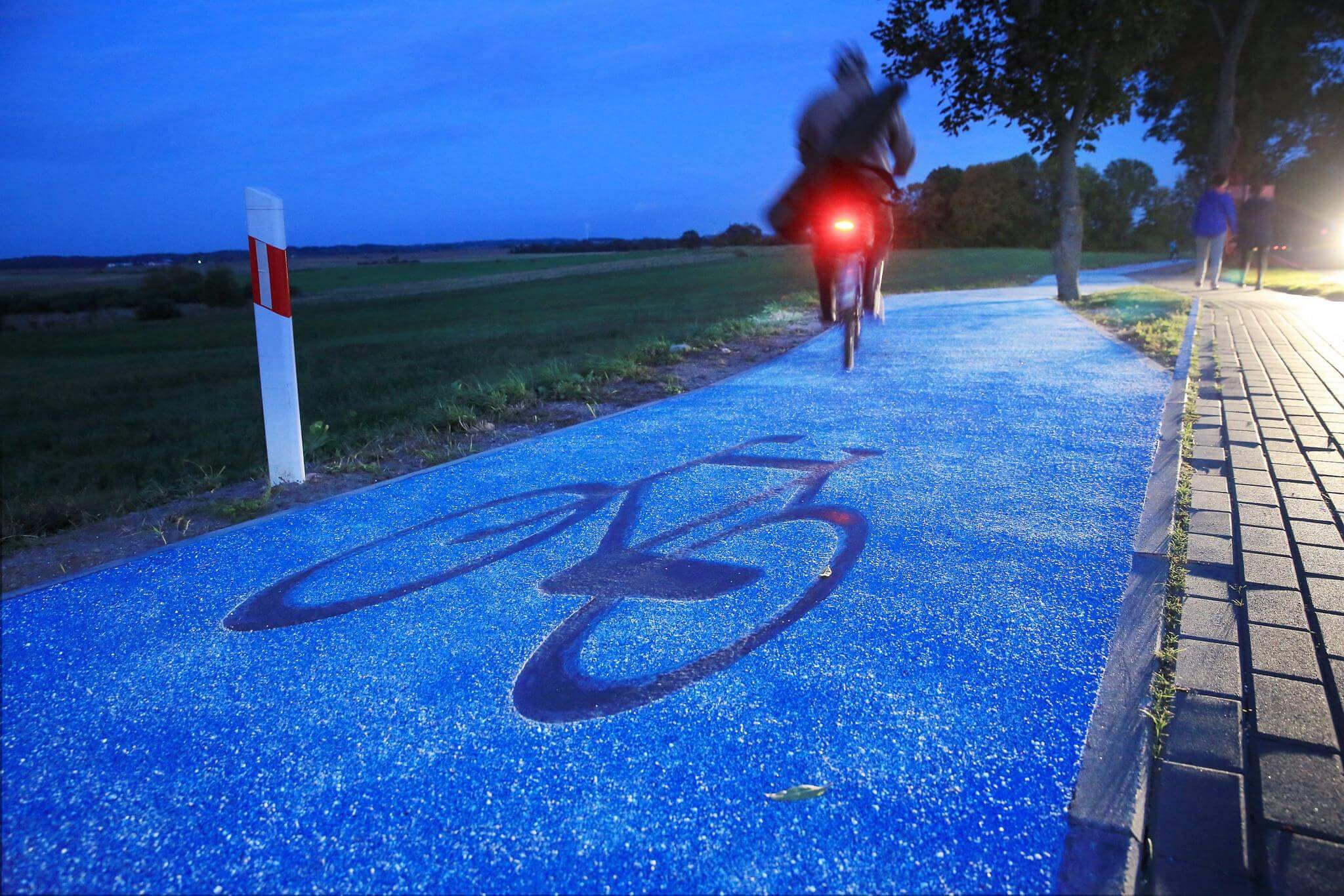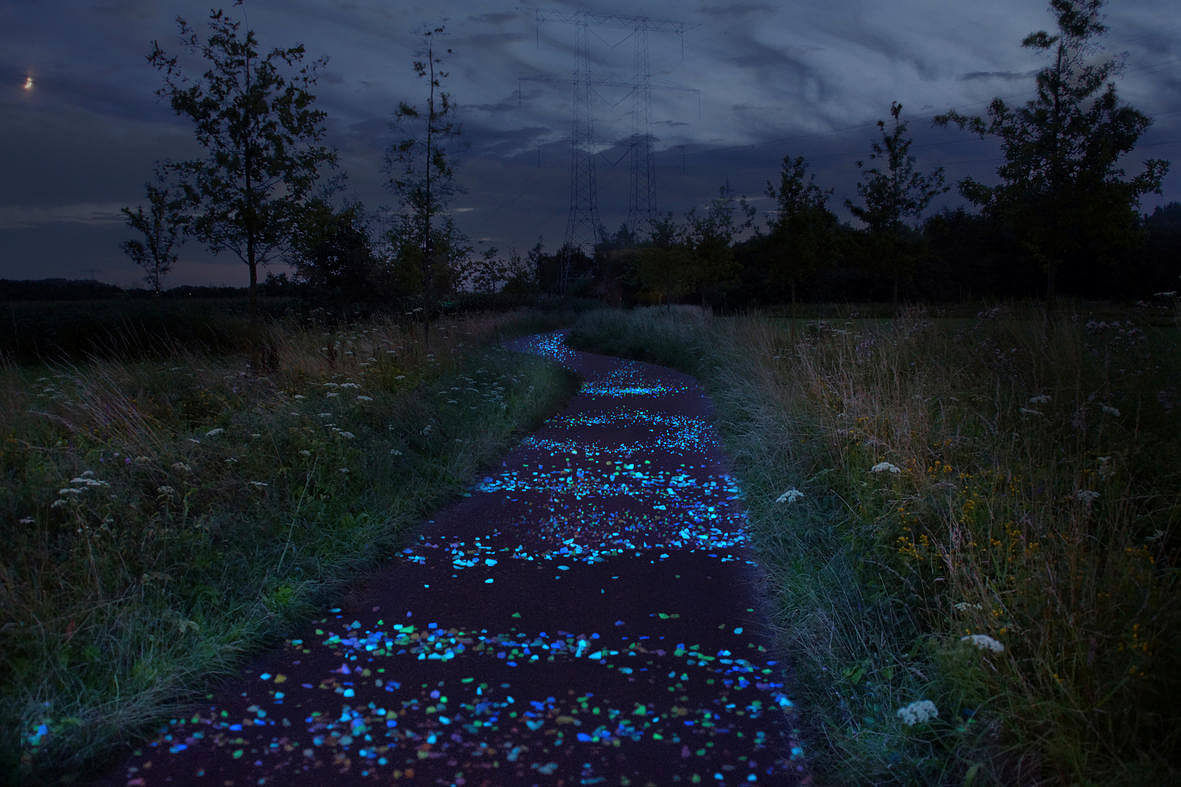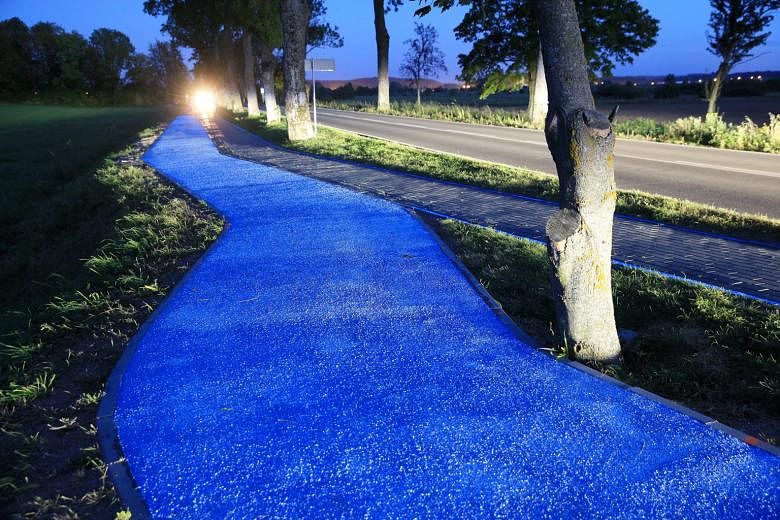This story was first published on Oct 25, 2016, and updated on July 24, 2017
SINGAPORE - A glow-in-the-dark track section, part of a 400m stretch along the Rail Corridor, has been open for public use since July 12.
The "test track" - located between Choa Chu Kang Road and Upper Bukit Timah Road - will undergo a two-year trial to determine the best surface material for use that will make the Corridor safer and more accessible.
Other places around the world have already turned to glow-in-the-dark materials to build paths that make their communities stand out when the sun goes down.
The Straits Times takes a look at some of them.
1. LIDZBARK WARMINSKI, POLAND
In late September, the Polish town of Lidzbark Warminski unveiled a 100m bicycle path that glows blue at night. The path uses a synthetic material that stores the energy from sunlight and then emits light over the course of up to 10 hours.

Engineers from TPA Instytut Badan Technicznych, which designed the path, said that they were inspired by a similar glow-in-the-dark path in the Netherlands.
2. NUENEN, THE NETHERLANDS

Painter Vincent van Gogh once lived in the town of Nuenen, and artist Daan Roosegaarde paid tribute to him in 2014 with a 600m path inspired by van Gogh's famous work Starry Night.
Coloured stones with luminescent paint are embedded in the ground in patterns that imitate the swirls of van Gogh's brushstrokes. The pebbles draw their charge from a nearby solar panel.
The path was built as part of a campaign to promote van Gogh's work and celebrate his life.
3. GOSFORD, AUSTRALIA

The coastal Australian city of Gosford, in the state of New South Wales, unveiled a 400m glow-in-the-dark footpath near a railway line in 2014.
The path lights up because its building material contains zinc sulphide, a mineral that can be made to absorb ultraviolet light from the sun.
Mr Warren Truss, who was then Australia's Deputy Prime Minister and Minister for Infrastructure and Regional Development, said that the glow-in-the-dark technology was more cost-effective than installing conventional electric lights.
4. BRUCE, AUSTRALIA
After the nearby city of Gosford pioneered glow-in-the-dark paths in Australia, the Australian Capital Territory was quick to follow suit in 2015 with a 220m bicycle path in the Canberra suburb of Bruce. A glow-in-the-dark layer was applied to the surface of the track.
The trial period, which the Australian government said "will run as long as necessary", will investigate whether this subtler method of lighting public spaces will have a more positive outcome for nocturnal animals native to the area.
5. CAMBRIDGE, UNITED KINGDOM

A British firm, Pro-Teq, invented a spray-on substance that it calls "Starpath". The substance converts paths into glow-in-the-dark lanes, and a trial was carried out on a 150m stretch of walkway in a park in Cambridge in 2013.
The proprietary mixture contains aluminium dysprosium europium strontium oxide, which is responsible for the glow-in-the-dark effect. As with nail polish during a manicure, the glow-in-the-dark layer is applied to a base and sealed with a top coat.
Pro-Teq advertises the spray-on substance as ready for pedestrians after four hours.
6. NEWCASTLE, UNITED KINGDOM
Following the Pro-Teq trial in Cambridge, municipal authorities in the northern English city of Newcastle decided in 2014 that they wanted a glow-in-the-dark path of their own.
City councillors said that spraying the footpath with the glow-in-the-dark material was at least £35,000 (S$72,000 at the time) cheaper than installing street lights.
But residents were not satisfied with having their evening strolls lit by only a gentle glow.
One local man told the Newcastle Chronicle: "It is a good idea if they do all the paths but if they are just going to do this one I think it is a waste of time. I do not think people will feel safe, not with all the trees and the bushes."


